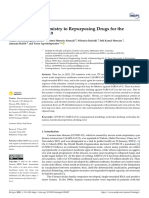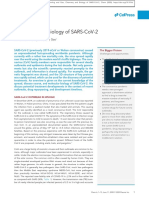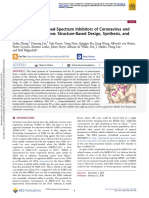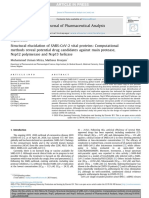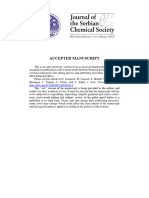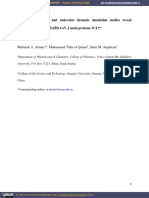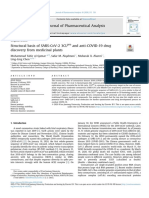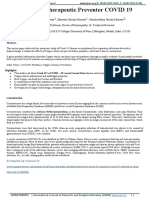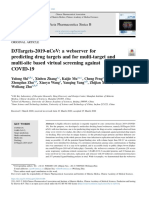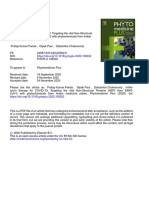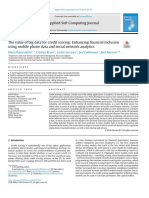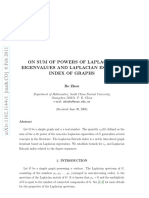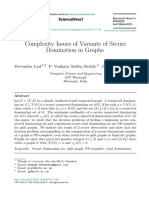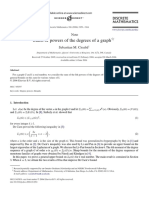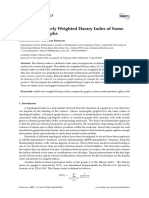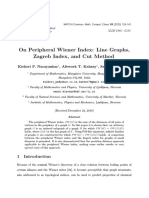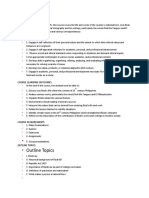0% found this document useful (0 votes)
191 views16 pagesQSPR Analysis of COVID-19 Drugs
This document discusses establishing a quantitative structure-property relationship (QSPR) between eV-degree and ve-degree topological descriptors and physicochemical parameters of phytochemicals screened against SARS-CoV-2 3CLpro. It develops an algorithm to compute topological indices for graphs representing chemical compounds. The study finds the eV-degree Zagreb index Mev and ve-degree first beta Zagreb index Mbve1 are useful for predicting molecular weight and topological polar surface area. It also discusses applications to the anticancer drug Camptothecin-Polymer Conjugate IT-101.
Uploaded by
BalachandranCopyright
© © All Rights Reserved
We take content rights seriously. If you suspect this is your content, claim it here.
Available Formats
Download as PDF, TXT or read online on Scribd
0% found this document useful (0 votes)
191 views16 pagesQSPR Analysis of COVID-19 Drugs
This document discusses establishing a quantitative structure-property relationship (QSPR) between eV-degree and ve-degree topological descriptors and physicochemical parameters of phytochemicals screened against SARS-CoV-2 3CLpro. It develops an algorithm to compute topological indices for graphs representing chemical compounds. The study finds the eV-degree Zagreb index Mev and ve-degree first beta Zagreb index Mbve1 are useful for predicting molecular weight and topological polar surface area. It also discusses applications to the anticancer drug Camptothecin-Polymer Conjugate IT-101.
Uploaded by
BalachandranCopyright
© © All Rights Reserved
We take content rights seriously. If you suspect this is your content, claim it here.
Available Formats
Download as PDF, TXT or read online on Scribd
/ 16











